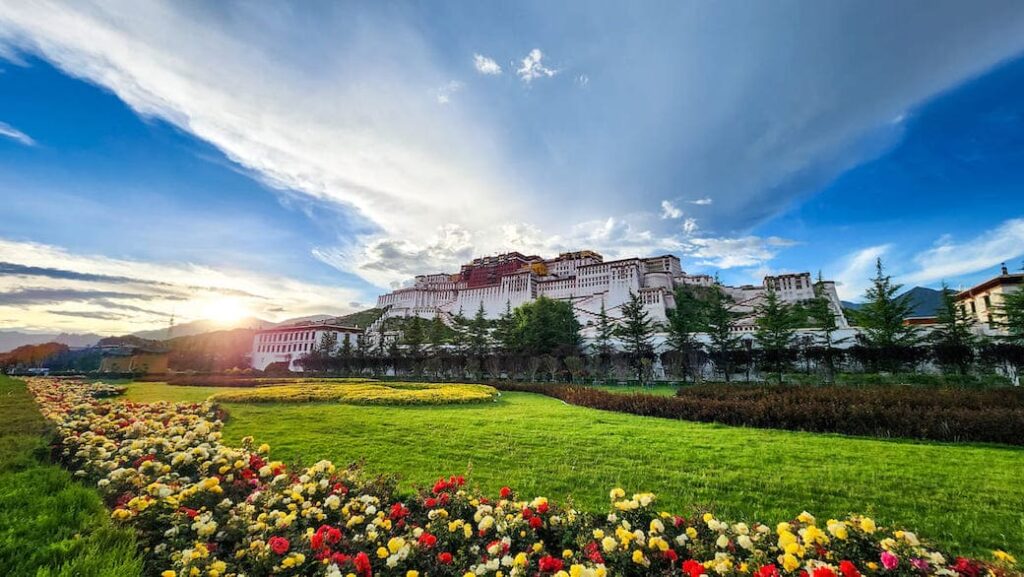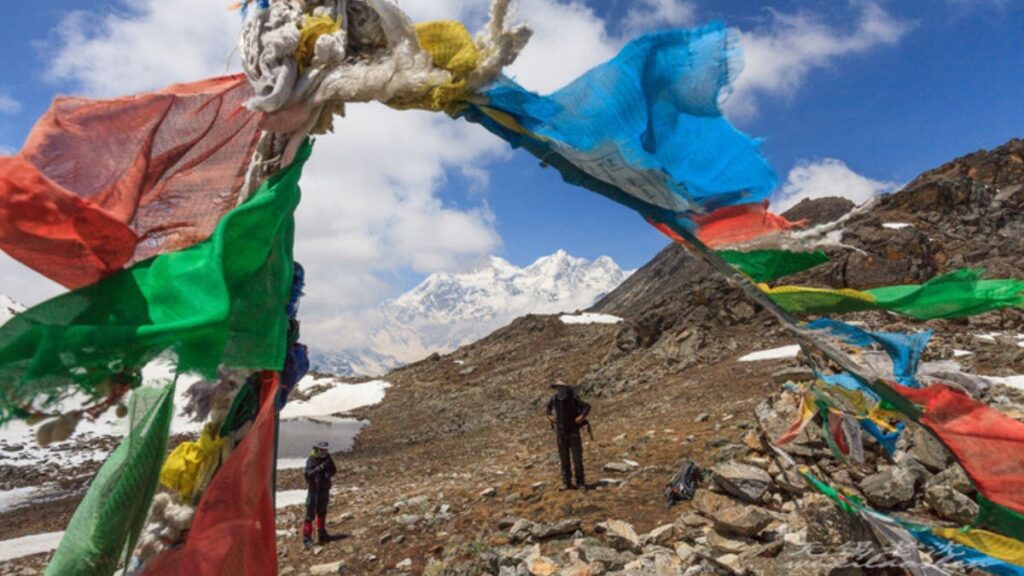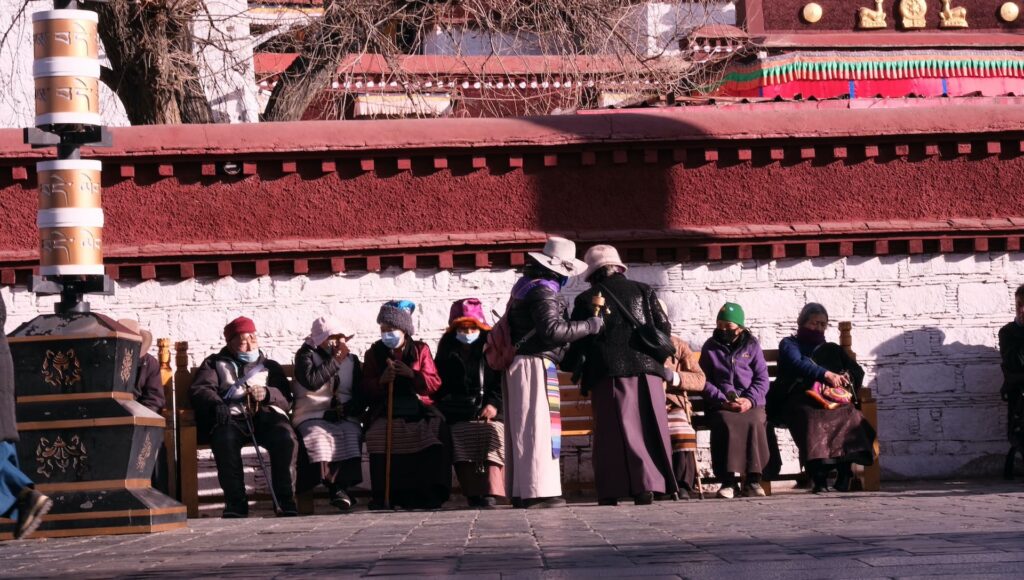A spiritual journey to explore the sacred sites of Tibet is a profound and transformative experience that allows individuals to delve into the depths of their spirituality and connect with a higher power. These sacred sites hold immense significance and serve as portals to enlightenment and inner peace.
By embarking on this journey, individuals can immerse themselves in the rich cultural and religious heritage of Tibet, gaining a deeper understanding of their own spiritual beliefs and practices. This exploration of the sacred sites of Tibet is not just a physical journey, but also a soulful quest to discover the essence of spirituality and find a deeper sense of purpose and meaning in life.
Tibetan spiritual significance
Tibet holds immense historical and cultural significance as a spiritual center. Situated in the Himalayan region of Asia, Tibet has long been regarded as a sacred land, attracting pilgrims and seekers of spiritual enlightenment from all over the world. Its isolation and remote location have contributed to the preservation of its rich cultural heritage and the development of distinct spiritual traditions.
Tibetan Buddhism has played a pivotal role in shaping the spiritual landscape of Tibet. Introduced in the 7th century, Tibetan Buddhism incorporates elements of Indian Buddhism and ancient Bon beliefs. It emphasizes compassion, wisdom, and the attainment of enlightenment. The Dalai Lama, the spiritual leader of Tibetan Buddhism, is considered a living embodiment of compassion and wisdom.

Throughout Tibet, there are numerous sacred sites that hold great significance for Tibetan Buddhists. The most famous of these is the Potala Palace in Lhasa, which was once the residence of the Dalai Lama. The palace is not only an architectural marvel but also a symbol of Tibetan spirituality and political power. Other important sacred sites include the Jokhang Temple, the holiest temple in Tibet, and Mount Kailash, a sacred mountain revered by Buddhists, Hindus, and Bon practitioners alike.
These sacred sites are not only places of worship but also centers of pilgrimage, attracting thousands of devotees each year. Pilgrimage is an integral part of Tibetan Buddhist practice, with devotees undertaking arduous journeys to seek blessings, purify their karma, and deepen their spiritual understanding.
The spiritual significance of Tibet extends beyond its religious institutions and practices. The breathtaking natural landscapes of the Tibetan Plateau, including vast grasslands, pristine lakes, and towering mountain peaks, are often seen as manifestations of the divine. These awe-inspiring landscapes inspire a sense of reverence and provide a backdrop for spiritual contemplation and meditation.
Tibet’s spiritual significance is deeply rooted in its historical and cultural heritage. Tibetan Buddhism and its sacred sites have shaped the spiritual traditions of the region, attracting pilgrims and seekers of enlightenment. The natural beauty of Tibet further enhances its spiritual allure, making it a truly unique and revered spiritual center.
Role of the Sacred Sites in Tibet
Sacred sites play a significant role in a spiritual journey as they provide a space for pilgrimage and facilitate spiritual growth and self-discovery. Pilgrimage is the act of embarking on a journey to a sacred place with the intention of seeking spiritual enlightenment or connection. It is a practice that has been followed by various religions and spiritual traditions throughout history.

Pilgrimage allows individuals to detach themselves from their daily routines and immerse themselves in a sacred and spiritual environment. It provides an opportunity for introspection, reflection, and deepening of one’s faith or spiritual beliefs. The act of physically traveling to a sacred site can symbolize a commitment to the spiritual path and a willingness to undergo personal transformation.
One example of sacred sites that hold great significance in a spiritual journey is the ones found in Tibet. Tibet is known for its rich spiritual heritage and is home to numerous sacred sites, such as monasteries, temples, and mountains. These sites are believed to possess unique qualities that can inspire and awaken the spiritual essence within individuals.
Visiting these sacred sites in Tibet can offer a sense of awe and reverence, as well as a connection to the traditions and teachings of Tibetan Buddhism. The natural beauty of the Tibetan landscape, combined with the architectural wonders of the monasteries and temples, creates a serene and powerful atmosphere that encourages inner reflection and spiritual growth.
Furthermore, the energy and vibrations emitted by these sacred sites are believed to have a transformative effect on individuals. They are said to cleanse and purify the mind, body, and spirit, helping seekers to attain higher states of consciousness and spiritual awakening.
Sacred sites hold great significance in a spiritual journey as they provide a space for pilgrimage, introspection, and self-discovery. They offer an opportunity to connect with higher realms, deepen one’s faith or beliefs, and undergo personal transformation. Whether it be in Tibet or any other location, visiting these sacred sites can inspire and awaken the spiritual essence within individuals, making them an integral part of a spiritual journey.
Sacred Sites in Tibet
Tibet is a land rich in spiritual traditions and sacred sites, each holding a unique significance in the hearts of Tibetan Buddhists. Three of the most revered sites in Tibet are Mount Kailash, Potala Palace, and Jokhang Temple.
Mount Kailash, located in the western part of Tibet, is considered one of the most sacred mountains in the world. It is believed to be the abode of Lord Shiva in Hinduism and the dwelling place of Demchok, a wrathful deity in Tibetan Buddhism. Pilgrims from different faiths embark on a challenging journey known as the Kailash Mansarovar Yatra to circumambulate the mountain. This spiritual trek is believed to cleanse one’s sins and purify the soul.

Potala Palace, situated in the capital city of Lhasa, is an architectural marvel that served as the winter residence of the Dalai Lama for centuries. This iconic palace stands as a symbol of Tibetan Buddhism and Tibetan identity. It contains numerous chapels, sacred relics, and intricate murals that depict the life and teachings of Buddha. The Potala Palace holds great historical and cultural significance, as it was once the center of political and religious power in Tibet.
Jokhang Temple, located in the heart of Lhasa, is considered the most sacred temple in Tibet. It was built in the 7th century by King Songtsen Gampo to house a revered image of Buddha brought as a dowry by his Nepalese wife. The temple’s architectural style is a blend of Indian, Tibetan, and Nepalese influences. Pilgrims from all over Tibet visit Jokhang Temple to prostrate, chant prayers, and make offerings. The temple’s spiritual atmosphere, adorned with ancient murals and statues, creates a sense of tranquility and devotion.
Each of these sacred sites holds immense spiritual significance for Tibetan Buddhists. They are places of pilgrimage, where devotees seek blessings, enlightenment, and spiritual transformation. These sites also have deep historical and cultural roots, reflecting the rich heritage of Tibet and its religious traditions. The reverence and devotion associated with Mount Kailash, Potala Palace, and Jokhang Temple make them integral parts of Tibetan identity and contribute to the spiritual fabric of the region.
Challenges during a spiritual journey
Embarking on a spiritual journey in Tibet can be both physically and logistically challenging. The region’s high altitude and rugged terrain can pose difficulties for travelers, especially if they are not accustomed to such conditions. Altitude sickness is a common concern, and it is important to acclimatize properly to avoid any health risks. Additionally, the remote locations of many sacred sites in Tibet may require long and arduous journeys, often involving treks or challenging road conditions.
Logistically, obtaining the necessary permits and visas for traveling in Tibet can be a complex process. It is essential to plan ahead and be aware of the specific requirements and regulations imposed by the Chinese government. Moreover, due to the region’s political situation, access to some areas may be limited or restricted, further complicating the logistics of a spiritual journey.

However, despite these challenges, the rewards and transformative experiences that can be gained from undertaking a spiritual journey in Tibet are immeasurable. Tibetan Buddhism is deeply ingrained in the culture and landscape of the region, offering a unique opportunity for spiritual exploration and growth. Visiting sacred sites such as the Potala Palace in Lhasa or Mount Kailash can be a deeply moving experience, evoking a sense of awe and reverence.
The spiritual teachings and practices of Tibetan Buddhism can provide valuable insights and guidance for individuals seeking inner peace and enlightenment. Engaging with local communities, monks, and spiritual masters can offer profound wisdom and a deeper understanding of the spiritual path. The serene natural beauty of Tibet’s landscapes also provides a conducive environment for meditation and self-reflection.
Moreover, the challenges and hardships faced during the journey can themselves be transformative. Pushing past physical limitations and overcoming logistical obstacles can build resilience, strength, and a sense of accomplishment. The solitude and silence of the remote Tibetan landscapes can facilitate introspection and self-discovery.
While a spiritual journey in Tibet may present physical and logistical challenges, the rewards and transformative experiences that await make it a worthwhile endeavor. The opportunity to immerse oneself in the rich spiritual heritage of the region and connect with its sacred sites and teachings can have a profound impact on one’s spiritual growth and understanding.

Conclusion
Preserving and respecting sacred sites is of utmost importance for the future generations. These sites hold deep cultural, historical, and spiritual significance, and they provide a connection to our past and our roots. By preserving these sacred sites, we ensure that future generations can continue to learn from and appreciate the wisdom and knowledge that they hold. These sites are a testament to the diversity and richness of human culture, and they deserve to be protected and respected.
Furthermore, these sacred sites have the power to inspire and educate. They can teach us about different belief systems, values, and traditions, fostering tolerance, understanding, and respect for others. They remind us of the importance of living in harmony with nature and with each other.
By preserving and respecting sacred sites, we also contribute to the preservation of biodiversity and ecosystems. Many sacred sites are located in areas of natural beauty, such as mountains, forests, or rivers. By protecting these sites, we protect the habitats of countless species, ensuring their survival for future generations.
In conclusion, preserving and respecting sacred sites is not only a matter of cultural and spiritual significance but also an essential step towards a more sustainable and harmonious future. It is our responsibility to cherish and protect these sites so that they can continue to inspire, educate, and connect us to our collective history.

[…] are just a few highlights of what you can see and experience in Tibet during spring. Remember to check the latest travel restrictions and permit requirements, and […]
[…] guide is designed to help you navigate the complexities and ensure a memorable and enriching experience in Tibet in […]